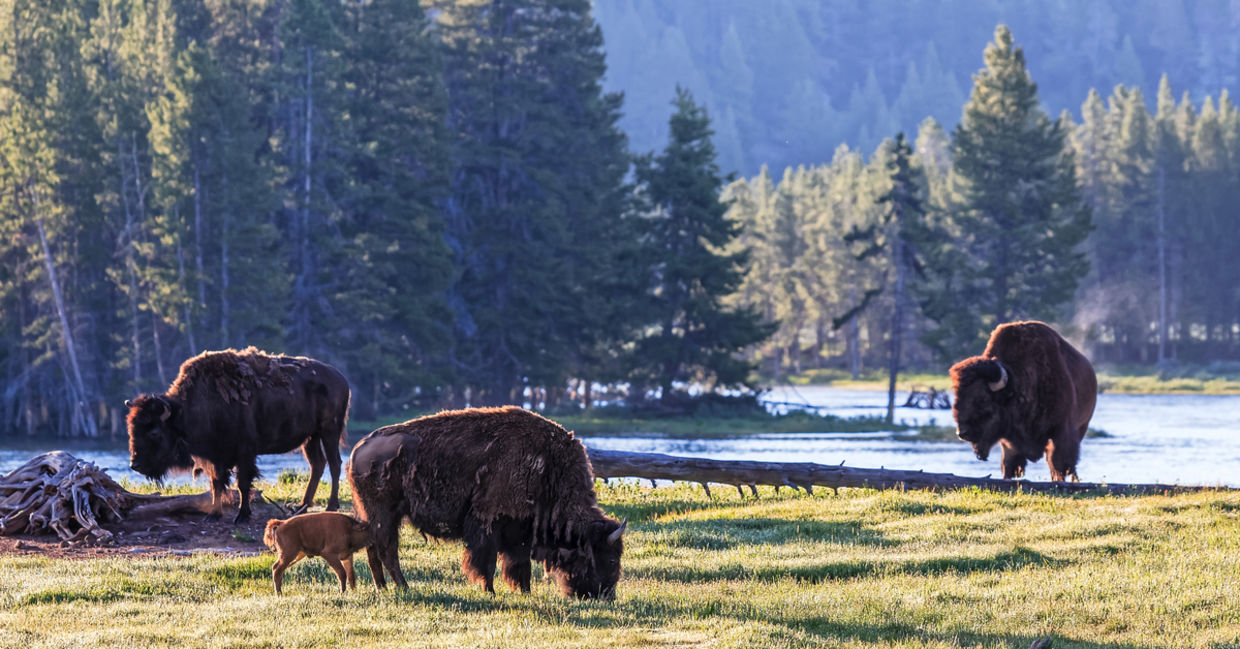
(Gray Photo Online / Shutterstock.com)
Hundreds of Buffalo are once again roaming on over 12,000 acres of prairie in Montana. The herd isn't in a national park or an animal sanctuary; they are located on tribal land belonging to the Assiniboine and Sioux tribes of Fort Peck Reservation.
The 340-strong herd of bison (the American buffalo is actually a type of bison, but the term buffalo stuck) is part of an ongoing restoration effort by North America's indigenous people to bring the majestic animal back from the brink of extinction.
The bison were crucial to the lives of the Plains tribes and provided food, shelter, clothing, tools, and even toys. The tribes revered the animal as gifts from the Creator, and it was and still is central to their spiritual beliefs.
Before the arrival of European settlers, tens of millions of bison lived across America's Great Plains in vast herds. The bison had roamed there for eons having been one of the few large mammals to survive the ice age.
By the end of the 1890s, the population was reduced to only 325. The killing of the bison was caused by the westward movement of the US and the expansion of farming and ranching into the prairie lands during the 1800s.
The animals were hunted and slaughtered by the millions by the US army and even from passengers on trains until they were almost extinct. The only remaining herd was in a remote valley in the Yellow Stone National park that increased from 23 after the great slaughter to 4,000 today. This group of bison is significant because it has never been domesticated or interbred with cattle from earlier attempts by ranchers to save the species. Today, the bison that are mixed with cattle are considered livestock and not wildlife and are used for their meat.
The tribes of the Fort Peck Reservation were actively committed since 2007 to try to restore the bison to their native lands. They are not that concerned with genetic purity. “You’ll find that amongst Native Americans … the predominant attitude is ‘if it looks like a Buffalo and smells like a Buffalo, it’s a Buffalo.’ The deep, personal relationship between Native Americans and Buffalo exists, and is relevant and important, whether or not a particular animal has 8% cattle genes or not,” Kelly Stoner who heads the Bison Program at the Wildlife Conservation Society (WSC) told The Guardian.
They looked to the Yellow Stone herd as the way to do it. The first of the Yellow Stone bison (around 60 animals) arrived in 2012 after a prolonged fight with the government of Montana that the tribes won. “There was a huge celebration; many, many people from the community came out,” Jonathan Proctor, Rockies and Plains program director with NGO Defenders of Wildlife, who has worked with the tribes for years to bring the bison back told The Guardian. “It was just thrilling to see.”
Since then, more animals have arrived, and the Fort Peck herd now counts around 340 animals and is among the top 10 conservation herds in the US.
In 2014, the Buffalo Treaty was signed by 21 tribes and First Nations in the US and Canada. The agreement was first theorized by the Bison Program at the Wildlife Conservation Society (WSC) and members of the Iinnii Initiative to collaborate to restore the free-roaming bison to the US and Canada.
“We used to always have an empty chair for the Buffalo, for the spirit of the Buffalo in our talking circles,” Leroy Little Bear, a professor at the University of Lethbridge told The Guardian. “It’s hard to explain but the Buffalo was basically asking us, ‘you know, I’ve been gone for 150 years, why do you want me to come back?’”
To Little Bear, the answer was simple. Young people need more than just to hear the stories and songs about the Bison; they need to see them too.
There will probably never be millions of bison roaming the prairies again - civilization has taken much of their habitat - but the Fort Peck tribes dream is to see their herd, now 2,500 strong, will run on more land. To make that dream reality, the tribes have passed a resolution to purchase more land.
Native tribes are leading the restoration of the Bison in numerous places in the US and Canada and the Fort Peck Reservation is just one of them. They have, working together, brought the Bison home.
YOU MIGHT ALSO LIKE:
This Library Strives To Revive Lost Languages Through Poetry
7 Animals Native to Canada That Aren’t Polar Bears
These Wolves Can Help You Find a New Way of Thinking [VIDEO]






